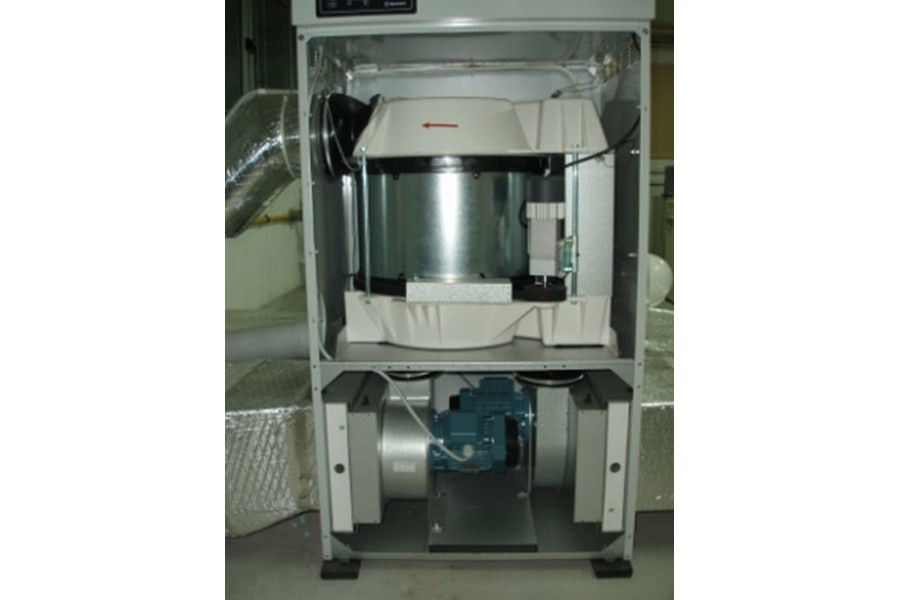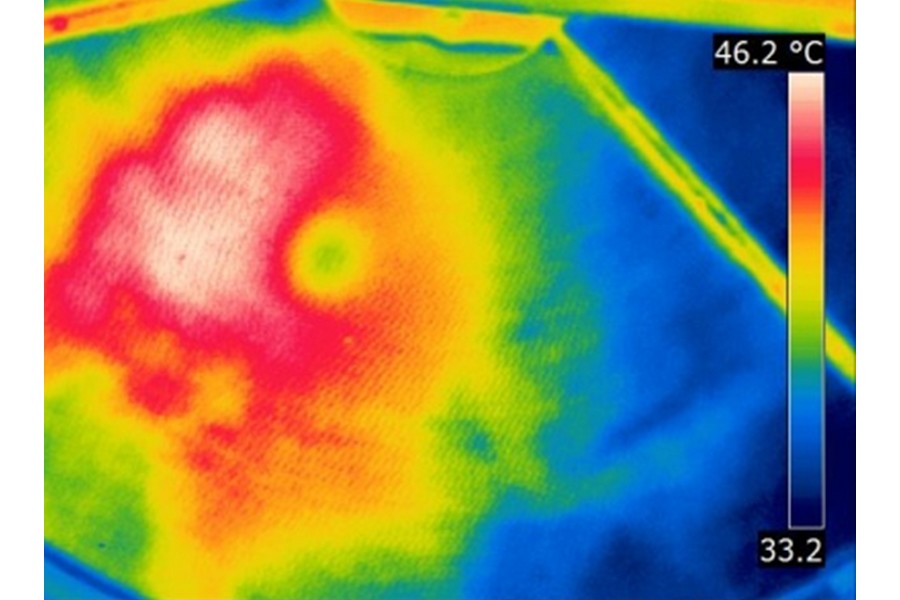Open cycle refrigeration systems with solid adsorbent material are an alternative means of air conditioning, in relation to conventional vapor compression refrigeration systems. These systems, by means of a rotary exchanger saturated with an adsorbent, dehumidify the ambient air entering the system. The main advantage of these systems is the ability to retain significant amounts of humidity from the air. In fact, in relation to open-cycle liquid adsorbent coolers, they exhibit greater dehumidification capacity. For this reason, they are used in installations where humidity regulation is necessary, such as libraries, museums, and food storage areas.
In addition to the rotary exchanger (dehumidification wheel), other key components of this system are the humidifier, the regenerator and the heat exchangers.
In general, open evaporative cycle systems have two specific characteristics which differentiate them and may also render them very popular in the near future:
- The different mode of operation compared to common air conditioners since dehumidification, heating and humidification of the air flow take place at different points. Therefore, the air stream entering the space acquires the desired characteristics gradually and at different points of the system.
- Negligible power requirements. In particular, power consumption is only parasitic and includes fans, circulators and control devices.
The specific installation aims at the experimental evaluation of an open circuit system (air-air) with solid desiccant material. During the experiment, the following parameters are considered:
- Determination of reference conditions for mixed air (ambient and recirculation air)
- Determination of reference conditions for indoor air
- Calculation of the coefficient of performance of the installation (COP)
- Calculation of the dehumidification capacity (DW) of the wheel
- Modelling the installation in MATHCAD software
By means of the sensors installed, information is obtained about the following conditions:
- Process stream: 1) room recirculation air conditions, 2) ambient air conditions, 3) mixed air conditions, 4) air conditions before the dehumidifier wheel, 5) air conditions after the dehumidifier wheel, 6) conditions of supply air as it enters the conditioned space.
- Regeneration stream: 1) ambient air conditions, 2) air conditions after the electric heating resistors, 3) exhaust air conditions after the regenerator.
Characteristics
Maximum air flow 690 m³/h
Dehumidifying capacity 0.008 kgΗ2Ο/kg dry air
Adsorbent Silica Gel
Measuring Systems 10 temperature sensors, 2 humidity sensors, 1 flowmeter





